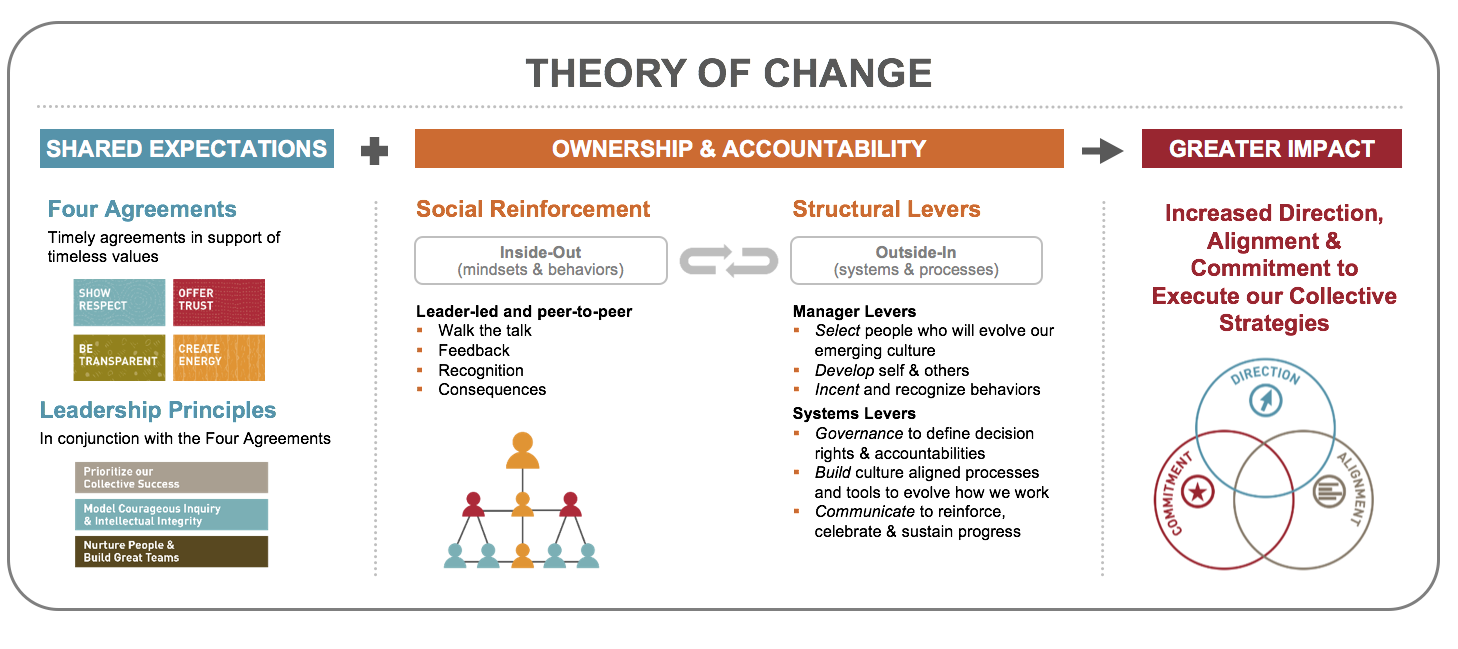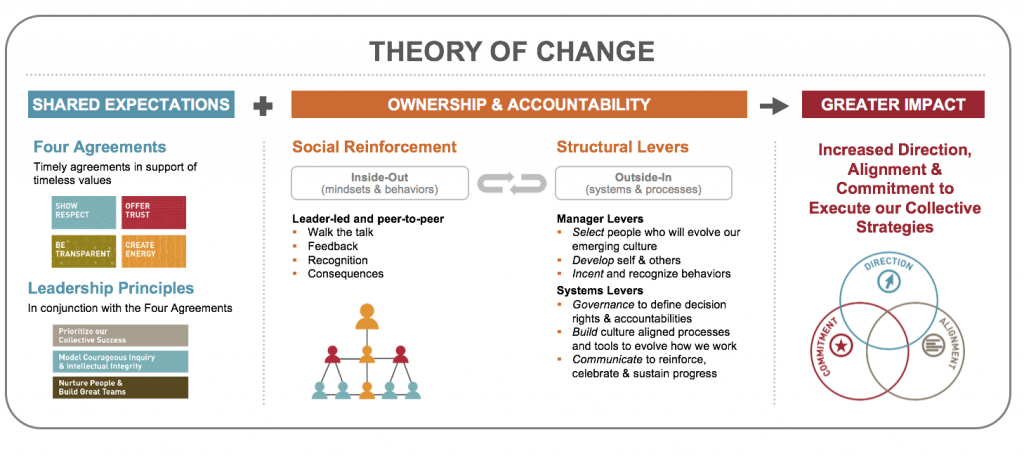What sets high performing cultures apart from other organizations, what’s their secret? That was the subject that Steven Rice, the Chief Human Resources Officer for the Bill & Melinda Gates Foundation, discussed with us this week in a wide ranging webinar on the impact of culture on organizations.
The Three Outcomes of High Performance Cultures
His thinking on the subject is grounded in the Center for Creative Leadership’s framework, based on extensive research in the field of building high performing teams and cultures. What they found is high performing cultures do 3 things exceptionally well – their culture creates clear direction, they align the organization to implements its priorities, and they ensure the commitment and inspiration of its people.
And while this may appear at first glance quite simple, the difficulty that arises is all three must be aligned, together, to drive a high performing team. You might have a clear and distinct direction, but if your resources aren’t aligned and you don’t have commitment from your workers, you will sub optimize on your strategy. The overlap is critical to implementing a high performing culture. But how do you get there?
Creating a Culture Built for Impact and Results
 To achieve a high performing culture, your organization must have a theory of how to implement change. Steven Rice explained “The joke that I make is that H.R. is a math problem… what are the inputs and outputs that really get you to the destination you want to achieve. If you look at the theory of change model the outcome we are trying to get to is the directional alignment…. we believe to get to that destination the organization needs to have a set of shared experiences, those are the four agreements. Those are the bellwether on how we will treat each other and operate in the context of the work we do.” The four agreements; Show Respect, Offer Trust, Be Transparent, and Create Energy are how individuals should comport themselves both in the work they do and outside the office.
To achieve a high performing culture, your organization must have a theory of how to implement change. Steven Rice explained “The joke that I make is that H.R. is a math problem… what are the inputs and outputs that really get you to the destination you want to achieve. If you look at the theory of change model the outcome we are trying to get to is the directional alignment…. we believe to get to that destination the organization needs to have a set of shared experiences, those are the four agreements. Those are the bellwether on how we will treat each other and operate in the context of the work we do.” The four agreements; Show Respect, Offer Trust, Be Transparent, and Create Energy are how individuals should comport themselves both in the work they do and outside the office.
Those are grounded on the leadership principles, characteristics that every manager in an organization should exhibit:
- Prioritize our collective success
- Model courteous inquiry and Intellectual Integrity
- Nuture People & Build Great Teams
The secret sauce of this formula centers on Ownership & Accountability. Organizations need to consider how feedback occurs and how it’s being internalize, what are the mindsets and behaviors that everyone must exhibit, and what are the consequences and accountability mechanisms in place to align incentives. The solution is a self reinforcing loop between social reinforcement and structural levers.
Social Reinforcements
- Leader-led and peer-topeer
- Walk the talk
- feedback
- recognition
- consequences
Structural Levers
- Manager Levers
- Select people who will evolve our emerging culture
- Develop self & others
- Incent and recognize behaviors
- System Levers
- Governance to define decision rights & accountability
- build culture aligned processes and tools to evolve how we work
- communicate to reinforce, celebrate, and sustain progress
Think Through Your Own Culture
This isn’t a one-size-fits-all approach to driving a high performing culture. Simply, it’s designed to be thoughtful, rigorous, and practical. Steven Rice stresses that every organization, whether adopting this model or refining their own, must realize:
- Culture wins over the best strategy, every time
- Culture doesn’t change without behavior shifts
- Leading culture is personal; you can’t ask anyone to do what you’re not willing to do first.
- Lacking strong external accountability for change, leaders create the conditions of accountability via their personal commitments
You can watch the entire webinar and view the slide deck here. This highly informative discussion between Mr. Levine and Mr. Rice demonstrates the centrality of culture in creating a high performing organization. This webinar underscores one important point, that culture cannot be ignored; that investing in culture will pay dividends.
About The Author

- At OnBoard, we believe board meetings should be informed, effective, and uncomplicated. That’s why we give boards and leadership teams an elegant solution that simplifies governance. With customers in higher education, nonprofit, health care systems, government, and corporate enterprise business, OnBoard is the leading board management provider.
Latest entries
 Board Management SoftwareJuly 26, 20225 Critical Board Engagement Survey Questions
Board Management SoftwareJuly 26, 20225 Critical Board Engagement Survey Questions Board Management SoftwareJuly 19, 2022What is an Advisory Council? (Overview, Roles, and Responsibilities)
Board Management SoftwareJuly 19, 2022What is an Advisory Council? (Overview, Roles, and Responsibilities) Board Management SoftwareJuly 15, 2022Balance Sheet vs. Income Statement: What’s the Difference?
Board Management SoftwareJuly 15, 2022Balance Sheet vs. Income Statement: What’s the Difference? Board Management SoftwareJuly 12, 2022Sweat Equity: Mark Haas of the Dallas Cup Board Gives a Nonprofit Play-by-Play for Success
Board Management SoftwareJuly 12, 2022Sweat Equity: Mark Haas of the Dallas Cup Board Gives a Nonprofit Play-by-Play for Success

